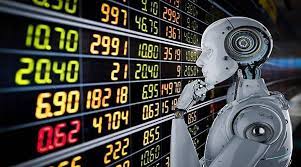In the ever-evolving landscape of financial markets, technology continues to play a pivotal role in reshaping trading methodologies. Among the array of technological advancements, Forex robots have emerged as a forex robot, offering traders the opportunity to automate their trading strategies with precision and efficiency. These automated systems, powered by algorithms and artificial intelligence, have garnered significant attention for their potential to optimize trading processes and deliver consistent returns. In this article, we delve into the world of Forex robots, exploring their functionalities, benefits, and considerations for traders.
Understanding Forex Robots:
Forex robots, also known as Expert Advisors (EAs), are software programs designed to execute trading decisions on behalf of traders. These automated systems operate based on predefined algorithms and parameters, allowing them to analyze market conditions, identify trading opportunities, and execute trades without human intervention. Utilizing various technical indicators, statistical analysis, and machine learning algorithms, Forex robots aim to capitalize on market inefficiencies and fluctuations to generate profits.
Functionality and Features:
The functionality of Forex robots varies depending on their design and complexity. However, most robots are equipped with the following features:
- Algorithmic Trading: Forex robots employ sophisticated algorithms to interpret market data and generate trading signals. These algorithms may utilize technical indicators, price action patterns, and mathematical models to identify optimal entry and exit points for trades.
- Risk Management: Effective risk management is integral to successful trading. Forex robots often incorporate risk management protocols to control position sizing, set stop-loss and take-profit levels, and manage overall exposure to the market.
- Backtesting and Optimization: Prior to deployment, Forex robots undergo rigorous backtesting to assess their performance using historical market data. Traders can optimize the parameters of the robot based on backtesting results to enhance its effectiveness in real-time trading conditions.
- 24/7 Trading: Unlike human traders, Forex robots can operate round-the-clock, executing trades in multiple markets across different time zones without fatigue or emotions.
Benefits of Forex Robots:
The adoption of Forex robots offers several benefits to traders:
- Emotion-Free Trading: One of the primary advantages of Forex robots is their ability to eliminate emotional biases from trading decisions. By adhering strictly to predefined algorithms, robots can execute trades based on logic and data, thereby avoiding the pitfalls of fear, greed, and indecision that often plague human traders.
- Increased Efficiency: Automation streamlines the trading process, enabling rapid execution of trades and timely response to market developments. Forex robots can scan multiple currency pairs simultaneously, identifying opportunities and executing trades with precision and speed.
- Consistency and Discipline: Forex robots adhere rigorously to trading strategies and risk management rules, ensuring consistency in trading performance over time. This consistency helps traders maintain discipline and avoid impulsive decisions driven by emotions.
- Diversification: With the ability to trade across multiple markets and instruments simultaneously, Forex robots facilitate portfolio diversification, spreading risk and potentially enhancing returns.
Considerations for Traders:
While Forex robots offer compelling advantages, traders should consider the following factors before integrating automated systems into their trading strategy:
- Strategy Development: The effectiveness of a Forex robot depends on the quality of its underlying trading strategy. Traders must conduct thorough research and testing to develop robust algorithms capable of adapting to changing market conditions.
- Monitoring and Supervision: While Forex robots operate autonomously, regular monitoring is essential to ensure optimal performance and mitigate risks. Traders should remain vigilant and intervene if necessary to address any technical issues or deviations from the intended strategy.
- Market Conditions: Automated trading systems may struggle to perform effectively during periods of high volatility or unusual market conditions. Traders should be mindful of the limitations of Forex robots and adjust their strategies accordingly.
- Security and Reliability: Choosing a reputable and reliable Forex robot provider is crucial to safeguarding investment capital and data security. Traders should conduct due diligence and opt for platforms with a proven track record of performance and customer support.
Conclusion:
Forex robots represent a powerful tool for traders seeking to enhance efficiency, consistency, and profitability in the foreign exchange market. By leveraging cutting-edge technology and algorithmic trading strategies, these automated systems offer a compelling solution to the challenges of manual trading. However, it is essential for traders to approach the adoption of Forex robots with careful consideration, ensuring thorough research, strategy development, and ongoing monitoring to maximize their potential benefits. With proper planning and execution, Forex robots have the potential to revolutionize the way traders navigate the dynamic landscape of global currency markets.
